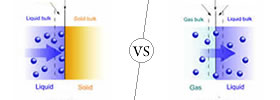Difference between Dwarf Planet and Moons
Key difference: A dwarf planet is “a celestial body in direct orbit of the Sun that is massive enough for its shape to be controlled by gravitation, but that unlike a planet has not cleared its orbital region of other objects.” Moons are the natural satellites of the planets. These natural satellites orbit around a primary body, mainly the planets, dwarf planets or large enough asteroids.
include("ad4th.php"); ?>
 The International Astronomical Union (IAU) defines a dwarf planet as “a celestial body in direct orbit of the Sun that is massive enough for its shape to be controlled by gravitation, but that unlike a planet has not cleared its orbital region of other objects.” The term dwarf planet was adopted by the IAU in 2006 as part of a three-way categorization of bodies orbiting the Sun.
The International Astronomical Union (IAU) defines a dwarf planet as “a celestial body in direct orbit of the Sun that is massive enough for its shape to be controlled by gravitation, but that unlike a planet has not cleared its orbital region of other objects.” The term dwarf planet was adopted by the IAU in 2006 as part of a three-way categorization of bodies orbiting the Sun.
Also see: The difference between dwarf planets and asteroids
As per the IAU's final Resolution 5A, planets and other bodies, except satellites, in our Solar System can be defined into three distinct categories:
- A planet is a celestial body that (a) is in orbit around the Sun, (b) has sufficient mass for its self-gravity to overcome rigid body forces so that it assumes a hydrostatic equilibrium (nearly round) shape, and (c) has cleared the neighborhood around its orbit.
- A "dwarf planet" is a celestial body that (a) is in orbit around the Sun, (b) has sufficient mass for its self-gravity to overcome rigid body forces so that it assumes a hydrostatic equilibrium (nearly round) shape, (c) has not cleared the neighborhood around its orbit, and (d) is not a satellite.
- All other objects, except satellites, orbiting the Sun shall be referred to collectively as "Small Solar System Bodies."
include("ad3rd.php"); ?>
The need for this three-way categorization arose as more and more trans-Neptunian objects were discovered. These trans-Neptunian objects, i.e. objects located further than Neptune, were equal to or even bigger than the size of Pluto. Furthermore, it was discovered that Pluto was actually roughly one-twentieth the mass of Mercury, or one-fifth as massive as Earth's Moon. In addition, it was also discovered that Pluto has some unusual characteristics such as large orbital eccentricity and a high orbital inclination. Hence, it was completely different than the other planets.
See: Difference between dwarf planets and plutoids
According to the previous categorization, all of the newly discovered trans-Neptunian objects would also be classified as planets, even though, like Pluto, they did not fit the traditional definition of a planet. So, the new three-way categorization model was adopted. Under this model, Pluto was demoted to a dwarf planet, while other solar objects that were too big to be classified as asteroids but did not meet the requirements for a planet were also classified under dwarf planets.
Currently, the IAU recognizes five dwarf planets in our Solar System: Ceres, Pluto, Haumea, Makemake, and Eris. However, only Ceres and Pluto have been observed in enough detail to demonstrate that they fit the definition. Hence, the other may or may not be reclassified as new information is available. It is estimated that there may be 200 dwarf planets in the Kuiper belt of the outer Solar System, and up to 10,000 in the region beyond.
Moons, on the other hand, are the natural satellites of the planets. These natural satellites orbit around a primary body, mainly the planets, dwarf planets or large enough asteroids. Natural satellites were rocks that had been left over after the solar system and the planets in it were formed. These rocks then either fell into an orbit around their nearest largest asteroid or planet or floated away into space.
 These natural satellites can range in sizes, some are bigger than planets. For example, Ganymede, a moon of Jupiter and Titan, a moon of Saturn are bigger in size than Mercury, which is a planet. Furthermore, it is not necessary that all planets have moons or have one moon: Mercury and Venus do not have moons at all; Earth has a single natural satellite, which we call, the Moon; Jupiter and Saturn have more than 50 to 60 moons; Neptune and Uranus have more than 20 moons; even Pluto, Haumea, and Eris, which are considered as minor planets or dwarf planets have various moons, Pluto has five known moons. Furthermore, there are more natural satellites being constantly discovered.
These natural satellites can range in sizes, some are bigger than planets. For example, Ganymede, a moon of Jupiter and Titan, a moon of Saturn are bigger in size than Mercury, which is a planet. Furthermore, it is not necessary that all planets have moons or have one moon: Mercury and Venus do not have moons at all; Earth has a single natural satellite, which we call, the Moon; Jupiter and Saturn have more than 50 to 60 moons; Neptune and Uranus have more than 20 moons; even Pluto, Haumea, and Eris, which are considered as minor planets or dwarf planets have various moons, Pluto has five known moons. Furthermore, there are more natural satellites being constantly discovered.
As of January 2012, there are 176 known moons orbiting six of the eight planets, eight orbiting three of the five dwarf planets, and there are 76 asteroids located in the asteroid belt, between Mars and Venus, that have satellites orbiting them. Many of these satellites are believed to be capable of sustaining life. Some have proof of ice and water, while Titan even has an atmosphere.
Hence, the main difference between a dwarf planet and a moon is the fact that a dwarf planet is similar to a planet except that it has not cleared its orbit of debris, while, a moon is a satellite of a planet or a dwarf planet or even a large enough asteroid.
Image Courtesy: factfile.org, scienceblogs.com









Add new comment